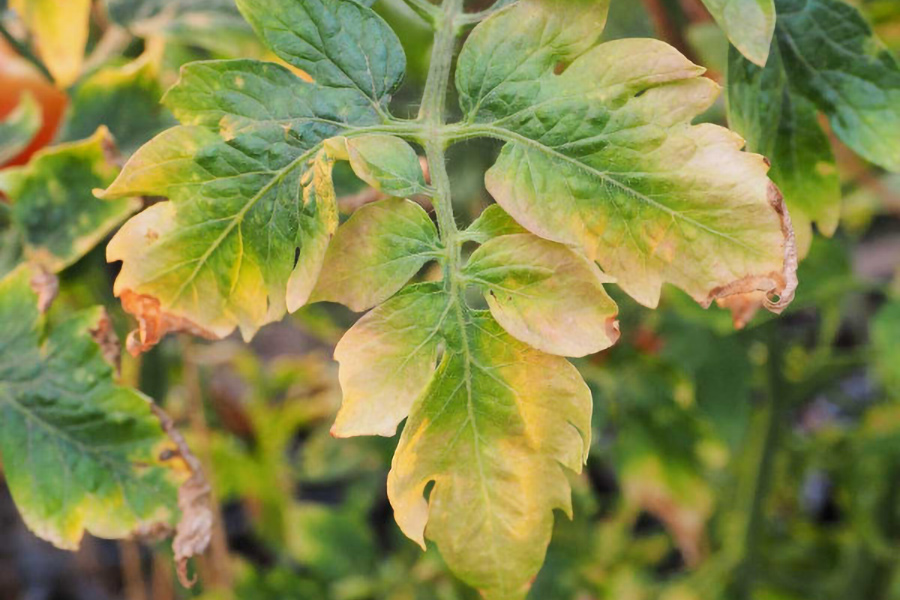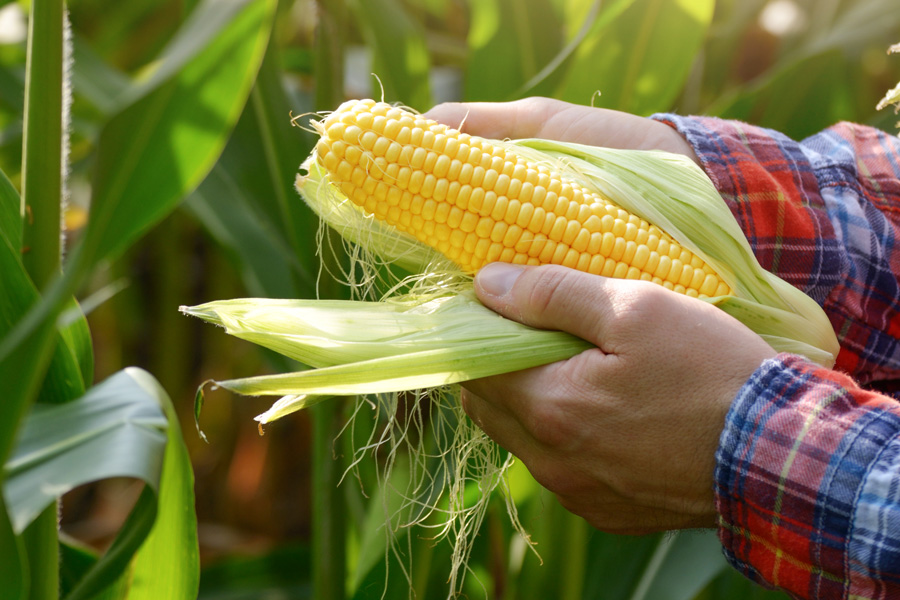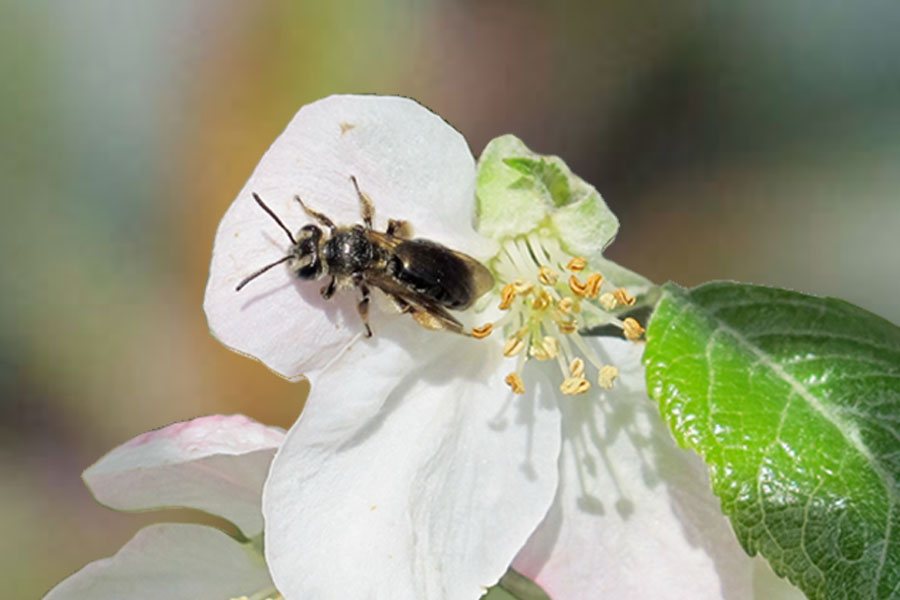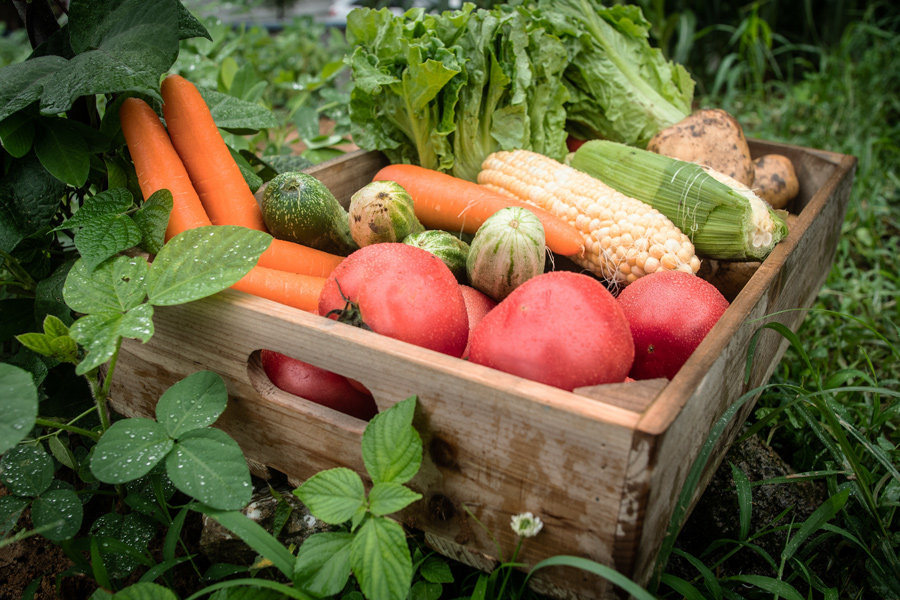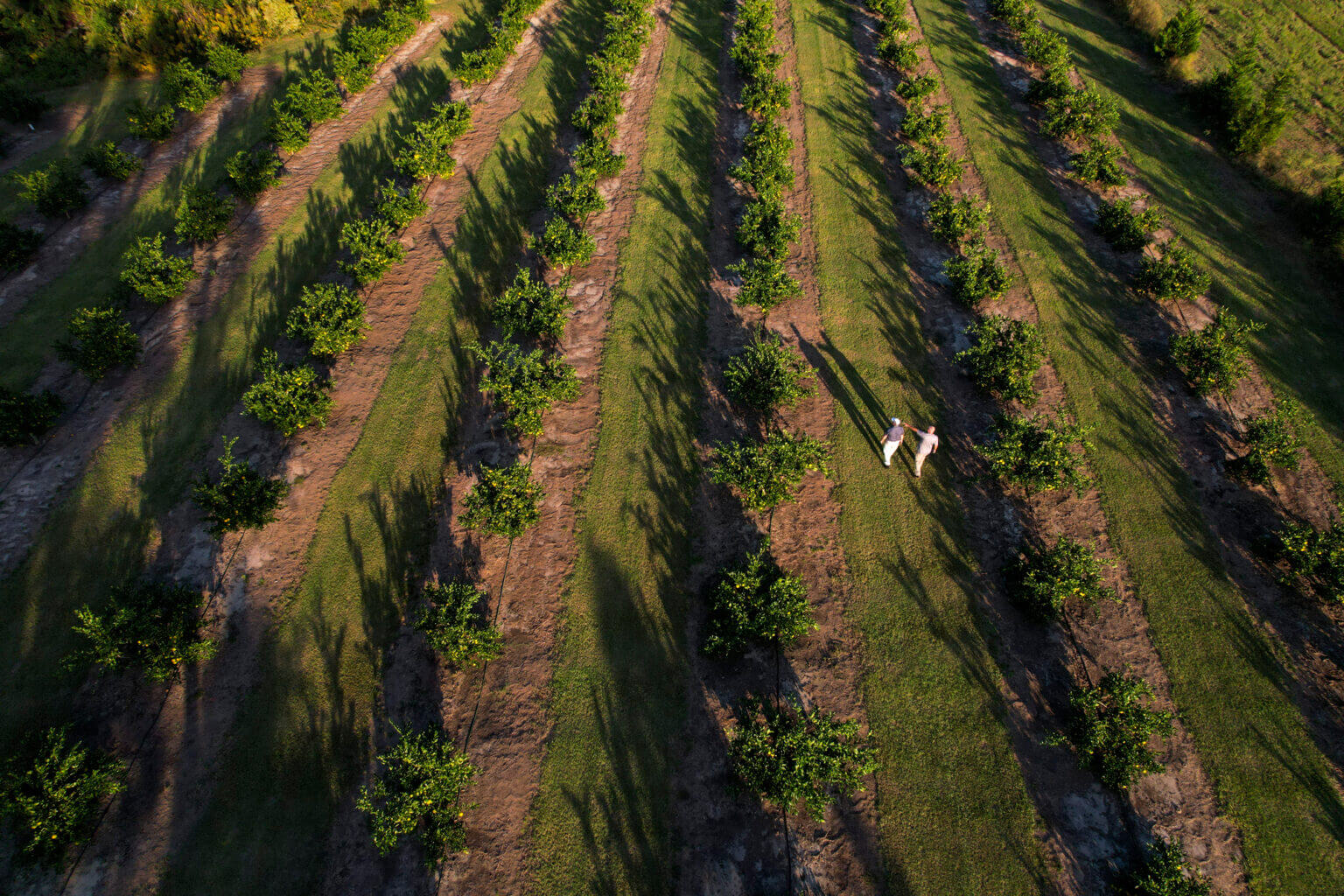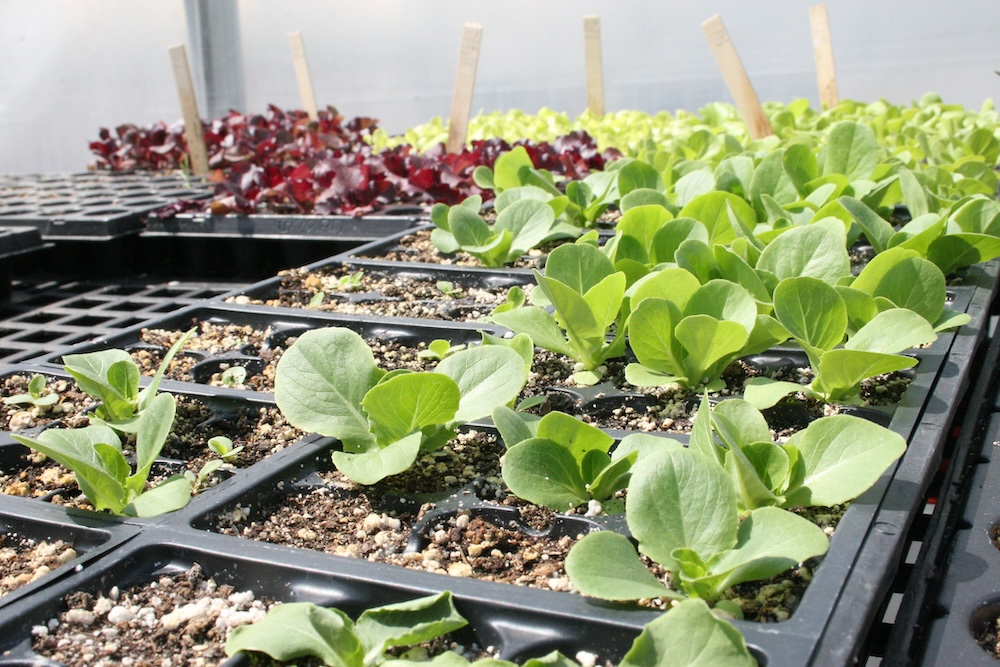This publication is co-authored by Makenzie English, Horticulture Program Assistant.
Introduction
In order to thrive and produce a successful harvest, vegetables must have proper nutrition. The macronutrients that vegetables require in the largest concentration are nitrogen, phosphorus, and potassium. In addition to these heavily utilized elements, vegetable plants also require limited amounts of micronutrients. Depending on the garden site, both macro and micronutrients may or may not be available in the native soil. In most cases, the grower must add nutrients to the soil in the form of fertilizer. The use of certain cover crops can also add supplemental nutrition to the soil. Many issues can affect how well a plant utilizes the available nutrition, including the pH of the soil, the type of soil, nutrient availability, organic matter content, and available soil moisture. Recognizing which nutrients might be deficient in a crop can assist the grower in diagnosing certain plant problems and finding the proper solution.
Nitrogen Deficiency
Symptoms

The most obvious sign of nitrogen deficiency is the yellowing of leaves, typically in the older, mature foliage of the lower limbs.
Causes and Remedies
Nitrogen can be washed out of the soil when excess rains occur and also can volatilize quickly into the atmosphere in hot and humid conditions. Sandier soils typically will require more nitrogen because of leaching. Nitrogen helps with new leaf and shoot growth, as well as aids in developing the green color of the plant. Check to make sure the pH is adjusted properly before fertilizing. Most vegetables prefer slightly acidic soil. Nitrogen deficiency results in yellowing and stunted growth in lower limbs. This is because the nutrient is mobile in the plant and when deficient, will quickly be moved to new growth, depleting the amount in mature foliage. Provide nitrogen at planting time and a few weeks after the plant emerges. Apply again as needed after the fruit sets. Avoid applying nitrogen to vegetables that are just beginning to flower.
Note that one common problem in vegetables is excess nitrogen. These plants will be dark green and grow excessive foliage but fail to flower or fruit. Stems can also become brittle.
Phosphorus Deficiency
Symptoms
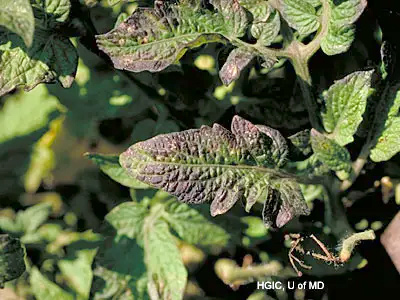
Signs of phosphorus deficiency typically occur first on the older, lower leaves and may show up as puckering and purple color throughout the leaf. Like nitrogen, it is a mobile nutrient and will be displaced from mature to developing leaves.
Causes and Remedies
Phosphorus deficiency can occur from lack of fertilizer or low pH, cold wet soils, or even dry soil conditions. Test the soil to find out what the phosphorus level is and adjust as needed. Resist the temptation of planting too early in the season when soil temperatures are below 65 °F.
Potassium Deficiency
Symptoms
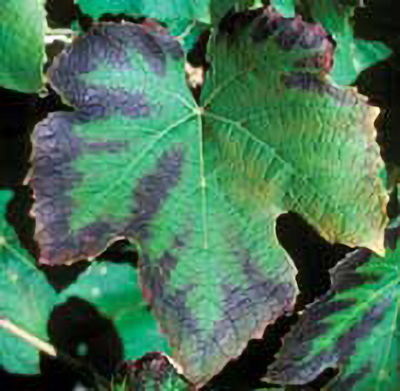
Symptoms of potassium deficiency usually appear as a brown outer margin on the leaf. Like nitrogen and phosphorus, this macronutrient becomes deficient first in mature foliage. Fruits may develop yellow areas and be underdeveloped. Lack of potassium can lead to multiple other plant disorders such as ripening disorder, yellow shoulder, blotchy ripening, and development of white core.
Causes and Remedies
Potassium deficiencies can be more of an issue in light, sandy soils, where it leaches out faster. Test the soil and use high-potassium fertilizer when needed. Maintain a proper pH of 6.2–6.8.
Magnesium Deficiency
Symptoms

A sign of magnesium deficiency is interveinal yellowing in the older, lower foliage first.
Causes and Remedies
Magnesium deficiency is mostly common in light, sandy soils. Overuse of high-potassium fertilizers can cause magnesium deficiency. Magnesium is needed for healthy leaves and for photosynthesis to occur. Check soil pH and add dolomitic lime before planting to increase magnesium when needed. Epsom salt is a faster way to supply it after planting.
Iron Deficiency
Symptoms

A sign of iron deficiency is the yellowing of leaves between the veins, while veins remain green. This typically is seen on new leaf growth near the top of the plant.
Causes and Remedies
High pH in the soil (over 7.0) is the most common cause of iron deficiency. Over- or underwatering can also cause iron deficiency. Provide consistent, even water and check soil pH for proper range. To lower pH if needed, use elemental sulfur or other acidifying agents. Chelated iron products also are a good way to correct iron deficiency. Use elemental sulfur or other acidifying agents as recommended by a soil analysis.
Boron Deficiency
Symptoms
A boron deficiency can distort the growing tip, which can lead to tip death, and cause brittle foliage and the yellowing of lower leaf tips with purple/brownish spots. In broccoli and other brassicas, boron deficiency can cause them to develop soft brown centers or brown hollow hearts.
Causes and Remedies
There are several causes of boron deficiency, including insufficient boron in fertilizer or tap water, dry or wet soil, high humidity, high pH levels, high calcium levels, densely packed soils, cold root growth areas, or inactive roots. Boron is required for healthy plant cell formation. If needed, boron can be applied using the household product Borax. Follow directions from soil analysis to apply the proper amount of boron.
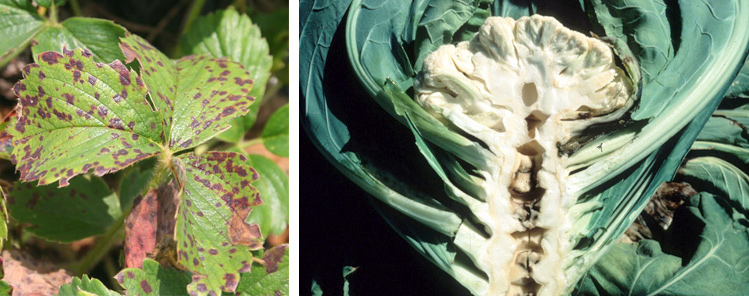
Sulfur Deficiency
Symptoms
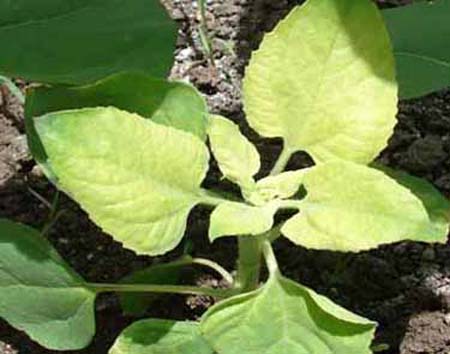
A sulfur deficiency will show up as pale green, yellowish leaves—very similar to nitrogen deficiency, but these are seen on younger leaves near the top of the plant.
Causes and Remedies
Sandy soils are more prone to sulfur deficiency. When needed, elemental sulfur can be added to the garden to meet the micronutrient requirements. Take caution not to add too much sulfur or the pH of the soil may drop below the ideal range. Add the proper amount of sulfur depending on the results of soil analysis.
Calcium Deficiency
Symptoms
Calcium deficiency can appear as an overall yellowing in the leaves, as well as cupping of the leaves. Blossom-end rot frequently is an indicator; it appears as a black, leathery lesion on the bottom blossom side of the developing vegetable. It can happen to any vegetable but is most common in the solanaceous and cucurbit vegetables.
Causes and Remedies
Either a lack of calcium in the soil or poor irrigation practices can lead to deficiency. Calcium is normally applied to a garden in the form of dolomitic limestone. Liquid calcium sprays are rarely effective. Monitor irrigation to keep soil evenly moist.
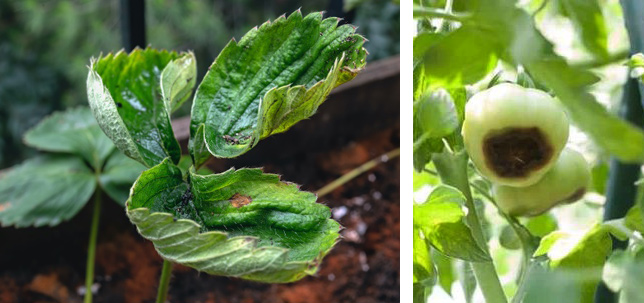
Zinc Deficiency
Symptoms
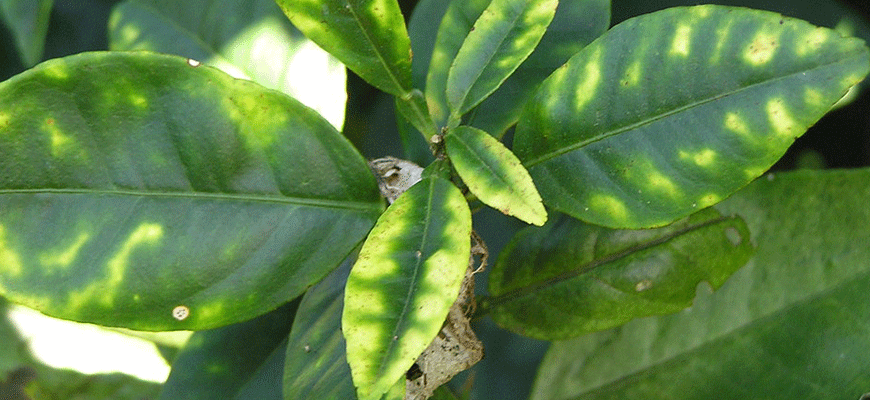
Zinc deficiency can cause discolored leaves and stunted growth in plants. Often the leaves appear yellow while the veins stay dark green. Sweet corn often shows zinc deficiency in cool soils.
Causes and Remedies
Zinc is often naturally occurring in the soil but may become deficient over time. It can be added using a fertilizer that contains micronutrients or by adding zinc oxide directly to the soil.
Manganese Deficiency
Symptoms

Symptoms of manganese deficiency include leaves turning yellow while the veins remain dark green, similar to a zinc deficiency. Typically, younger developing leaves show symptoms first.
Causes and Remedies
Manganese deficiency typically occurs in soils that have a high pH (alkaline soils). Test soil to check the pH. The pH can be lowered by using sulfur or other acidic solutions.
Note that manganese toxicity can also occur when soil pH is too low (below 6.0). This often affects cucurbits and appears as water-soaked lesions on the leaves.
Copper Deficiency
Symptoms
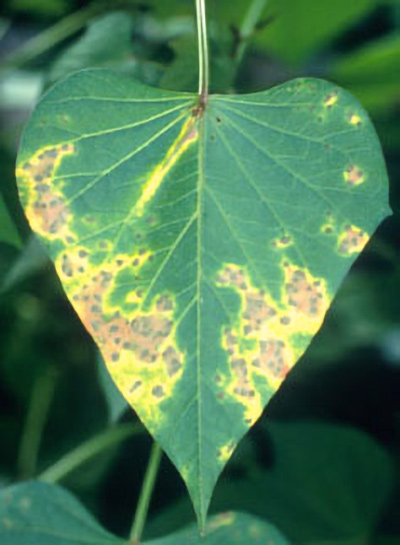
Plants with a copper deficiency appear stunted plants and have pale green and yellow leaves that wither easily. The outside of the leaf may be yellow with brown patches appearing. Leaves can also cup, looking similar to a calcium deficiency.
Causes and Remedies
The soil pH is a primary factor for copper deficiency. Test soil and adjust the pH up or down to the range of 6.2–6.8 to allow copper to be available to plants.
Molybdenum Deficiency
Symptoms
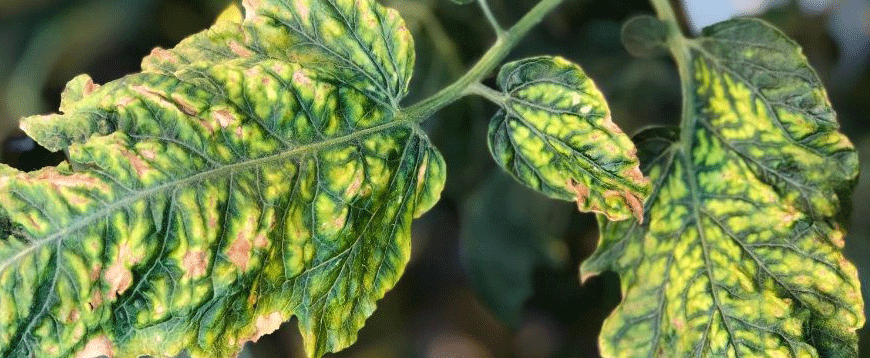
Plants deficient in molybdenum show yellow-tan, interveinal chlorosis between leaf veins. Older leaves are usually the first to show deficiency.
Causes and Remedies
Molybdenum deficiency usually occurs when the pH is either too high or too low. Test soil and adjust to a pH between 6.2–6.8.
Fertilizer Burn
Symptoms
Fertilizer burn can show up as individual brown burns on the leaves or marginal tip burns along the leaf margins. The leaves become dehydrated and begin to die back causing the brown, damaged tissue.
Causes and Remedies
Avoid placing fertilizer too close to the base of plants. Do not broadcast fertilizer over the top of plants when the leaves are wet. Any fertilizer caught on leaves should immediately be brushed off. Fertilizer applications should be timed with incoming rain, or when irrigation is turned on within a day of application. If applying liquid feed, make sure the plants are well-watered beforehand.
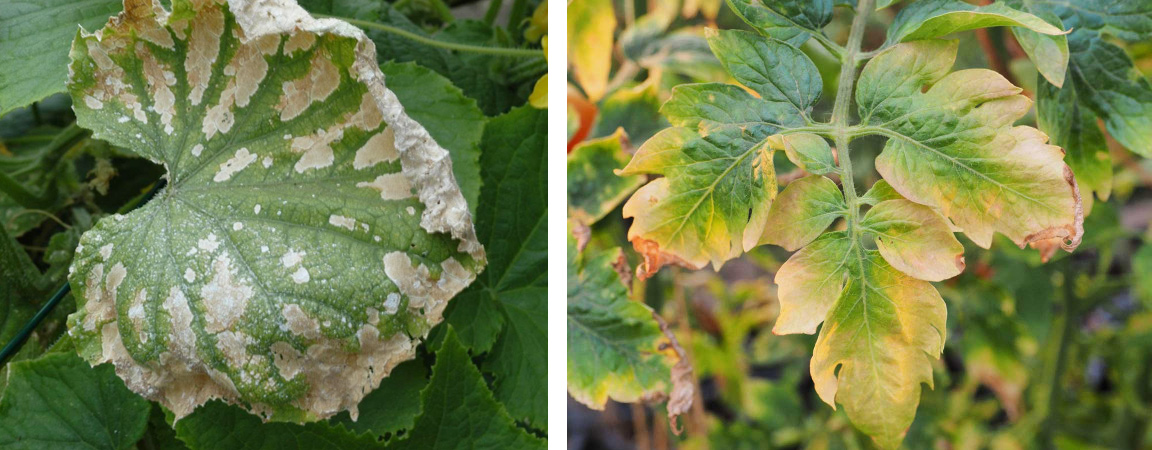
Summary
Proper nutrition is essential to ensure the best chance of a successful harvest. Even small micronutrients can make a big difference in how a plant performs. Some nutritional deficiencies look similar, and it can take time and practice to distinguish between them. Soil testing, provided through your local Extension office, is a valuable tool to help analyze the nutrient base of the soil. It is much easier to correct deficiencies in the soil before planting rather than finding the issue later when the plant starts to show symptoms. Another way to test nutritional values and deficiencies is through plant tissue sampling. Contact your local county Extension office to learn how to submit a sample.
Note that sulfur is often applied to lower the pH of the soil when necessary. The amount of sulfur depends greatly on the soil type and texture. In general, it takes between 10–20 lb of sulfur per 1000 square feet to drop the soil pH by one full point. Sandier soils will require less added sulfur than clay soils. Soil sampling is the best method to determine how much sulfur is needed.
